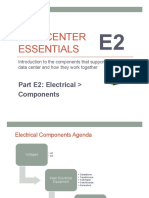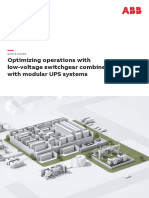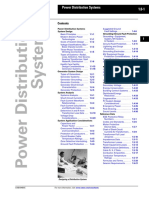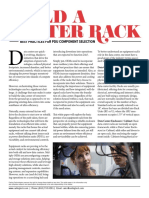0% found this document useful (0 votes)
188 views7 pagesData Center Power Distribution Basics
Data centers are crucial for storing digital assets and consume a significant amount of electricity, with U.S. data centers using about 100 billion kilowatt-hours annually. They rely on complex power distribution systems, including medium and low voltage distribution, emergency power systems, uninterruptible power supplies, and power distribution units to ensure continuous operation. The server rack is the final destination for electrical power, housing the critical computer systems and network infrastructure necessary for online services.
Uploaded by
Romuel PioquintoCopyright
© © All Rights Reserved
We take content rights seriously. If you suspect this is your content, claim it here.
Available Formats
Download as DOCX, PDF, TXT or read online on Scribd
0% found this document useful (0 votes)
188 views7 pagesData Center Power Distribution Basics
Data centers are crucial for storing digital assets and consume a significant amount of electricity, with U.S. data centers using about 100 billion kilowatt-hours annually. They rely on complex power distribution systems, including medium and low voltage distribution, emergency power systems, uninterruptible power supplies, and power distribution units to ensure continuous operation. The server rack is the final destination for electrical power, housing the critical computer systems and network infrastructure necessary for online services.
Uploaded by
Romuel PioquintoCopyright
© © All Rights Reserved
We take content rights seriously. If you suspect this is your content, claim it here.
Available Formats
Download as DOCX, PDF, TXT or read online on Scribd
/ 7

































































































































